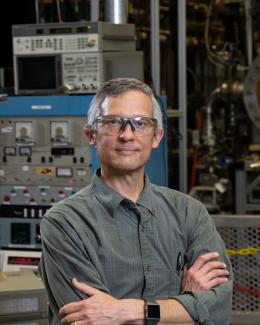Abstract
In order to determine long term performance of plasma facing components such as diverters and first walls for fusion devices, next generation plasma generators are needed. A Material Plasma Exposure eXperiment (MPEX) has been proposed to address this need through the generation of plasmas in front of the target with electron temperatures of 1-15 eV and electron densities of 1020 to 1021 m-3. Heat fluxes on target diverters could reach 20 MW/m2. In order generate this plasma, a unique radio frequency helicon source and heating of electrons and ions through Electron Bernstein Wave (EBW) and Ion Cyclotron Resonance Heating (ICRH) has been proposed. MPEX requires a series of magnets with non-uniform central fields up to 2 T over a 5m length in the heating and transport region and 1 T uniform central field over a 1-m length on a diameter of 1.3 m. Given the field requirements, superconducting magnets are under consideration for MPEX. In order to determine the best construction method for the magnets, the cryogenic refrigeration has been analyzed with respect to cooldown and operational performance criteria for open-cycle and closed-cycle systems, capital and operating costs of these system, and maturity of supporting technology such as cryocoolers. These systems will be compared within the context of commercially available magnet constructions to determine the most economical method for MPEX operation. The current state of the MPEX magnet design including details on possible superconducting magnet configurations will be presented.







